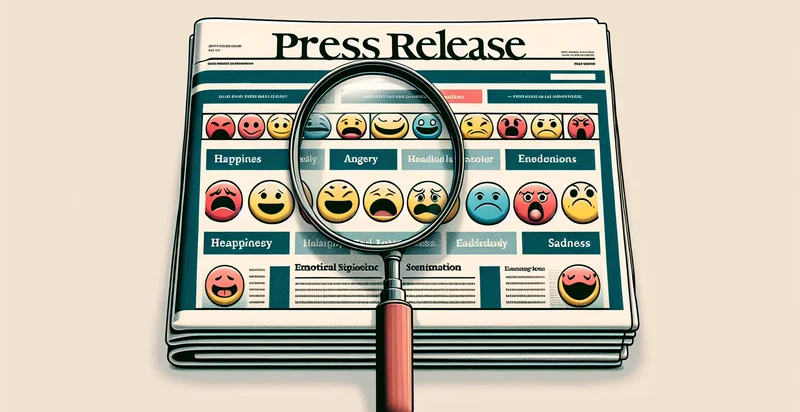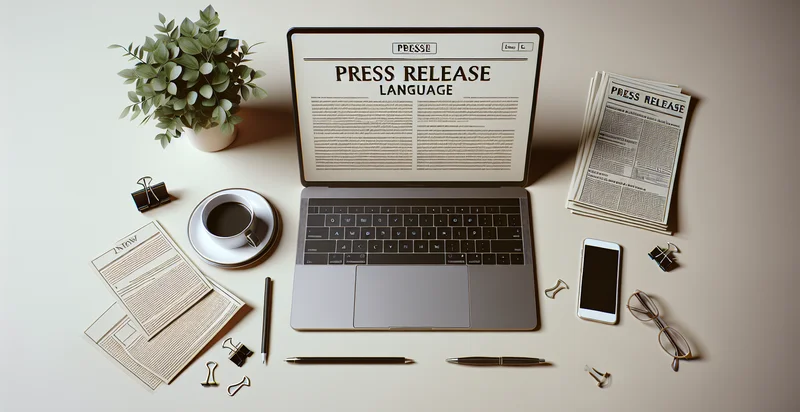Identify press release sentiment
using AI
Below is a free classifier to identify press release sentiment. Just input your text, and our AI will predict the sentiment of the press release. - in just seconds.

Contact us for API access
Or, use Nyckel to build highly-accurate custom classifiers in just minutes. No PhD required.
Get started
import nyckel
credentials = nyckel.Credentials("YOUR_CLIENT_ID", "YOUR_CLIENT_SECRET")
nyckel.invoke("press-release-sentiment", "your_text_here", credentials)
fetch('https://www.nyckel.com/v1/functions/press-release-sentiment/invoke', {
method: 'POST',
headers: {
'Authorization': 'Bearer ' + 'YOUR_BEARER_TOKEN',
'Content-Type': 'application/json',
},
body: JSON.stringify(
{"data": "your_text_here"}
)
})
.then(response => response.json())
.then(data => console.log(data));
curl -X POST \
-H "Content-Type: application/json" \
-H "Authorization: Bearer YOUR_BEARER_TOKEN" \
-d '{"data": "your_text_here"}' \
https://www.nyckel.com/v1/functions/press-release-sentiment/invoke
How this classifier works
To start, input the text that you'd like analyzed. Our AI tool will then predict the sentiment of the press release..
This pretrained text model uses a Nyckel-created dataset and has 20 labels, including Critical, Disappointed, Discouraging, Encouraging, Enthusiastic, Favorable, Hopeful, Mixed, Negative and Neutral.
We'll also show a confidence score (the higher the number, the more confident the AI model is around the sentiment of the press release.).
Whether you're just curious or building press release sentiment detection into your application, we hope our classifier proves helpful.
Related Classifiers
Need to identify press release sentiment at scale?
Get API or Zapier access to this classifier for free. It's perfect for:
- Investor Relations Analysis: Companies can leverage the 'press release sentiment' identifier to analyze the tone of their financial press releases. By assessing sentiment, they can gauge investor reactions and adjust communications strategies accordingly to foster positive relationships and trust.
- Brand Reputation Management: By identifying sentiment in press releases, organizations can track how their announcements impact brand reputation. This analysis helps in proactive reputation management and allows PR teams to refine messaging to avoid negative perceptions.
- Crisis Communication Monitoring: In times of crisis, companies can use the sentiment identifier to assess the tone of their statements and press releases. Quick sentiment feedback can inform management decisions and refine ongoing communication strategies to mitigate damage.
- Market Research Insights: Marketers can analyze the sentiment of competitor press releases to better understand market positioning and public perception. This insight can inform competitive strategies and help in crafting more compelling marketing campaigns.
- Product Launch Evaluation: Prior to a product launch, companies can evaluate the sentiment of their press releases to predict market reception. Understanding whether the sentiment is primarily positive or negative helps in adjusting timing, messaging, and promotional tactics.
- Stakeholder Engagement Tracking: Organizations can utilize sentiment analysis to measure how press releases resonate with key stakeholders such as customers, suppliers, or community members. This data provides valuable feedback for enhancing engagement and sustaining stakeholder interest.
- Content Strategy Optimization: PR teams can use the sentiment identifier to analyze past press releases, helping to identify which types of messages yield the most positive reactions. This can guide future content strategy to maximize engagement and effectiveness in announcements.


